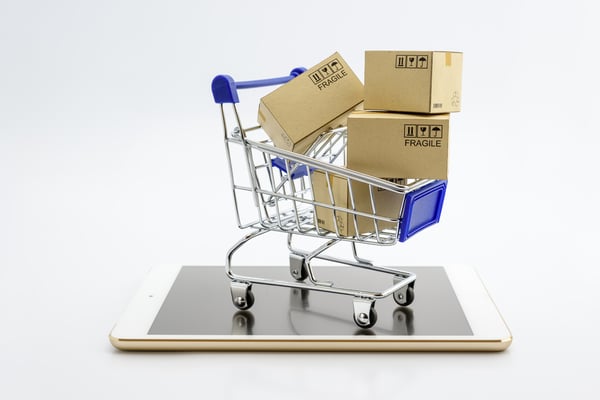Online Shoppers Are Not All Alike: viax Revolutionizes How B2B Ecommerce Does Business


If you’re like me, an average consumer and avid online shopper, you might jump onto Amazon as a go-to source for fast and easy Cyber Monday shopping, pandemic necessities or maybe an impulsive lunchtime purchase of a new gadget. Many B2C online shoppers opt for quick and decisive transactions and are perfectly happy to make their purchases via one-click shopping.

Contrast these preferences with the more complex needs of a visitor to a B2B website – for example, a corporate buyer seeking to price a fleet of equipment on an ecommerce site of a manufacturing corporation. How might his expectations differ from a B2C shopper? How might her priorities for decision-making affect the purchasing process? While the end goals are the same — delivering a product and satisfying the online purchaser — the approach of B2C and B2B customers is often different.
Consider some common characteristics: B2B customers generally do a great deal of research because they’re making business decisions on behalf of a company – often with input from others — and usually on a large scale. The product information and specifications they seek are often detailed and complex. Site activities are often both transactional and relational, and require data from multiple sources. For example: Can your customers configure multiple product options, each with various shipping costs and time requirements? Can they obtain real-time pricing across various geographies, tax rates and currencies? Negotiate bundled deals? Will inventories be reliably up to date? And can complex orders be paused and resumed later?
 At viax.io, we understand these needs, not just at the front end to provide customer value, but more importantly, at the enterprise level, where the power and heavy lifting of the commerce engine truly takes place. We reimagine enterprise commerce, providing a holistic commerce cloud built to handle the complex needs of modern B2B business.
At viax.io, we understand these needs, not just at the front end to provide customer value, but more importantly, at the enterprise level, where the power and heavy lifting of the commerce engine truly takes place. We reimagine enterprise commerce, providing a holistic commerce cloud built to handle the complex needs of modern B2B business.
Our modular architecture offers a full array of modules and microservices that integrate natively with each other or seamlessly with other systems, from Ordering with Workflow and Lifecycle Management, CPQ, Billing and Subscription, to extensive PIM, Pricing, Inventory and ATP engines, AI/BI/ML, Security and Access Control, and CRM, among others. What’s more, our cloud also provides enterprise-level ERP functionality that goes beyond what businesses traditionally need, so your ecommerce function can instantaneously tap critical business functions throughout your company.
While the needs of a B2B user are typically more complex than those of B2C, the user experience should be anything but complex. No user wants to be overwhelmed with specs and SKUs, nor should your site be relegated to an off-the-shelf ordering portal. Your website is a reflection of your company’s image and should offer branded customization throughout the entire buying experience and across all devices.
Our headless approach to enterprise commerce was built with both the client and end user in mind, offering fully exposed, rich APIs, that allow clients to develop intuitive and customized, front-end branded user experiences for their customers. Clients can also extend our APIs to add custom attributes, build their own APIs, or use our library of JavaScript components. viax manages all of the business logic and analytics on the back end through our cloud.
Research from my colleague’s recent blog showed a clear and continued growth in B2B purchasing. And earlier this year, this article by Forbes senior contributor Shama Hyder, noted: “The predominance of B2B ecommerce means that B2B businesses must improve and simplify their shopping journey, channeling the B2C ordering experience. However, the B2B shopping experience is a lot more complicated than that of a B2C customer. That’s why it’s crucial for B2B ecommerce businesses to provide a more seamless transaction, building in advanced functionality to their sites for quote management, price negotiation, easy ordering, and inventory management.”
 Is your ecommerce platform built with complex needs and growing demand in mind? We’re here to help. Reach out to me, I'd be happy to chat.
Is your ecommerce platform built with complex needs and growing demand in mind? We’re here to help. Reach out to me, I'd be happy to chat.
Subscribe To Our Blog
Blog Tags
- modular commerce (23)
- Enterprise Commerce (22)
- B2B (20)
- D2C (20)
- Headless Enterprise Commerce (20)
- ERP (19)
- Digital Transformation (17)
- Modular Architecture (17)
- 4.0 Technologies for Manufacturing (15)
- ecommerce For Manufacturing (15)
- Manufacturing (13)
- viax Blog (7)
- Cloud Platform (6)
- Industry 4.0 (5)
- Client-Server (3)
- Headless OMS (3)
- PaaS (3)
- Proven Expertise (3)
- Solutions (3)
- Efficiency (2)
- Expertise (2)
- Fully Exposed API (2)
- Gartner Research (2)
- Headless Order Management System (2)
- OMS (2)
- Reliability (2)
- Security (2)
- Simplicity and Power (2)
- User Experience (2)
- Zero Downtime (2)
- 4.0 Technologies (1)
- Agile Approach (1)
- Composable Business Products (1)
- ERP Manufacturing (1)
- McKinsey Manufacturing Report (1)
- Order Management Orchestration (1)
- Quote to Cash (1)
- SAP (1)
- no-code (1)
- viax History (1)



.png)
